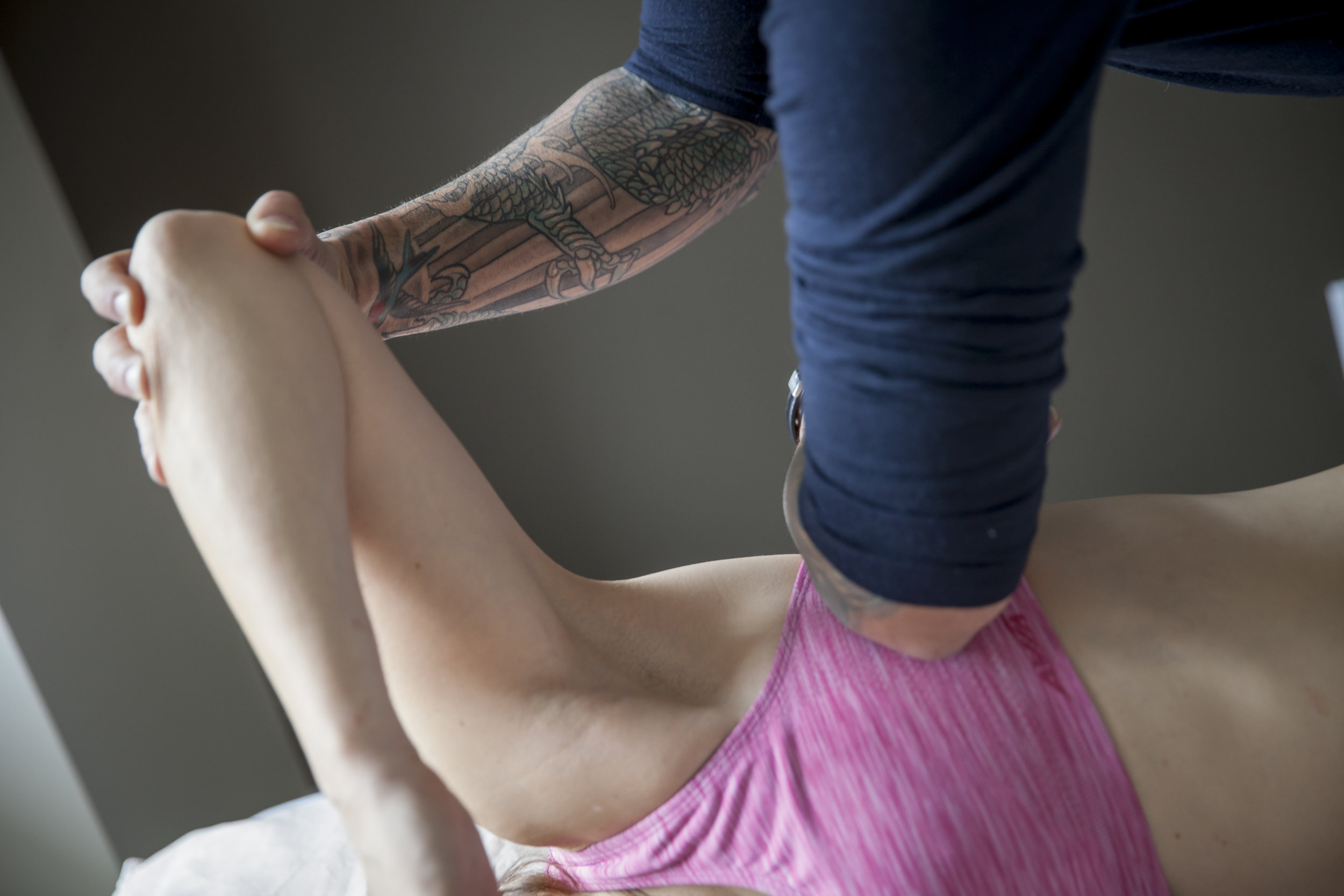
What is Rolfing Structural Integration®?
Rolfing Structural Integration® was introduced over fifty years ago by Dr. Ida P. Rolf with a primary focus on manipulating the muscular and connective tissues of the body into proper alignment for peak performance and health, including prevention and recovery from injury and stress reduction. Unlike forms of deep tissue massage, Rolfing Structural Integration® returns the body to a state of balance by manipulating and increasing the elasticity of connective tissues that wrap around every bone and muscle, moving the body into the correct alignment for optimum posture and functioning.
What are the benefits of Rolfing Structural Integration®?
Research has shown many physical and emotional health benefits from Rolfing Structural Integration® including:
Easing chronic pain
Reducing stress, increasing feelings of relaxation and well-being
Improving and aligning posture
Creating a more efficient use of muscles
Increases elasticity in the connective tissue that wraps all muscle and bone.
What is the difference between the Rolfing Structural Integration® and Massage Therapy?
Massage Therapy is concerned with the relief of muscle tension and pain. Rolfing Structural Integration® changes the postural imbalances of the body to correct the sources of tension and pain. Rolfing Structural Integration® isn't just a vigorous "deep-tissue" massage; it encourages the body to find new ways to organize and balance itself.
Who was Dr. Rolf?
Dr. Ida P. Rolf received her Ph.D. in biochemistry from Columbia University in 1920 and furthered her knowledge of the body through her scientific work in organic chemistry at the Rockefeller Institute. Her extensive research for solutions to family health problems led her to examine many systems that studied the effect of structure on function, including yoga, osteopathy and chiropractic. This, together with her scientific education, her curiosity, her intrinsic knowledge and her hands-on experience, guided her to a new understanding of the value of structural order.
A system of work emerged which Dr. Rolf called Rolfing Structural Integration®. She discovered that she could achieve remarkable changes in posture and structure by manipulating the body's myofascial system, devoting her energy to creating a holistic system of soft tissue manipulation and movement education that organized the whole body in gravity.
What is the Rolfing Structural Integration® 10 Series?
Rolfing Structural Integration® is recommended in a series of ten sessions, each of which focuses on a different area of the body. Each session lasts approximately one hour and can be scheduled anywhere from one per week to one per month.
During a session, the Practitioner will apply pressure to the myofascial tissue using his or her hands, arms, and sometimes elbow to carefully move the tissue. Ultimately the experience is meant to allow the client to achieve full body awareness. It is through this awareness, triggered by skillful tissue manipulation, that an individual can radically change his or her fundamental ease of movement.
Ten series - Can it possibly take fewer or more sessions?
The ten session format of Rolfing Structural Integration® is designed to work on the whole body systematically to bring it to a higher level of balance. It is possible for some people to need more than ten sessions to achieve those objectives.
Does The Rolf Studio offer other forms of bodywork?
Yes, Deep Tissue Massage and Active Assisted Stretching.
Deep Tissue Massage releases the chronic patterns of tension in the body through slow strokes and deep finger pressure using oils and cream. Active Assisted Stretching is a facilitated form of stretching that provides lengthening of major muscle groups.
What to Expect?
A Rolf Session typically lasts 80 minutes. For men you will wear underwear or exercise shorts and for women underwear or exercise shorts and a sports bra. Tim will assess your posture and movement at the beginning and end of the session. During a session, he will apply pressure to the myofascial tissue using his hands, fingers, arms, and sometimes elbow to carefully move the tissue.